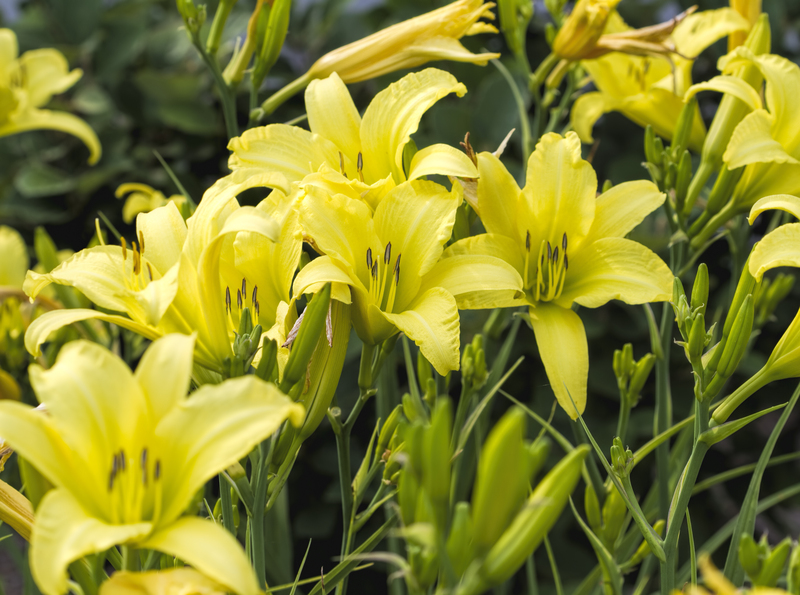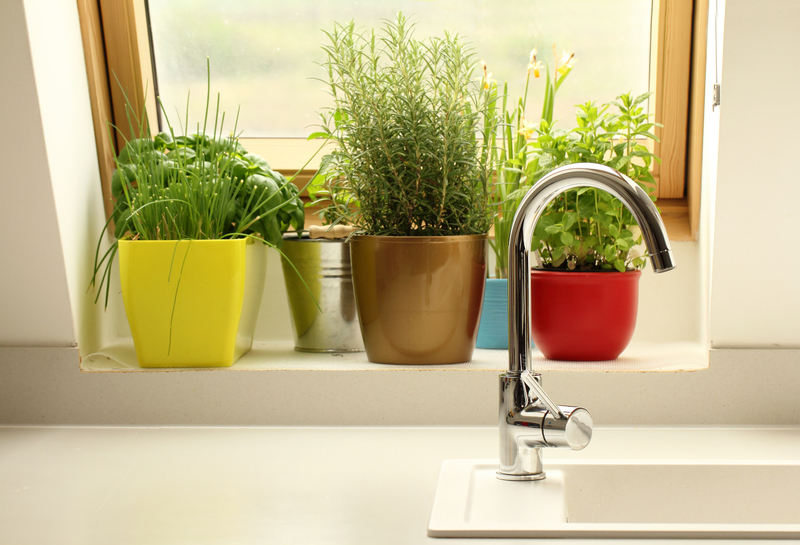How Vertical Gardening Can Enhance Your Well-being
Posted on 02/06/2025
How Vertical Gardening Can Enhance Your Well-being
Vertical gardening is more than just a design trend; it's a lifestyle transformation that allows you to integrate the therapeutic effects of nature into your living space, no matter the size. Whether you live in a compact apartment or have a traditional backyard, vertical gardens -- also known as green walls or living walls -- can contribute significantly to your overall well-being. In this comprehensive guide, we'll explore the physical, mental, and environmental benefits of vertical gardening, its positive impact on urban life, how to start one yourself, and why it's one of the most effective solutions for modern health and happiness challenges.
What is Vertical Gardening?
At its core, vertical gardening involves cultivating plants upwards using vertical surfaces, rather than horizontally in the ground. This method utilizes walls, fences, trellises, or specifically designed structures to support plant growth. Innovative systems like hydroponics, modular panels, and hanging planters have made vertical gardens accessible for both indoor and outdoor environments.
- Indoor vertical gardens: Perfect for apartments, offices, or homes with limited yard space
- Outdoor living walls: Enhance facades, fences, or balconies while making efficient use of sunlight
- DIY vertical gardening systems: Affordable and customizable for all spaces and skill levels
Not only do these gardens improve the aesthetics of any area, but their contributions to well-being are profound and supported by scientific research.

The Physical Benefits of Vertical Gardening
Improved Air Quality
One of the most significant health benefits of having a vertical garden is the improvement in air quality. Green walls naturally filter airborne toxins, dust, and pollutants, converting them into oxygen. Plants such as spider plants, snake plants, philodendrons, and ferns are particularly effective at purifying indoor air.
- Decreases indoor air pollution levels
- Reduces allergens and respiratory problems
- Increases oxygen levels for better breathing
This makes vertical gardens especially beneficial in cities with poor air quality or in poorly ventilated homes and offices.
Encourages More Physical Activity
Engaging in vertical gardening means regular movement--planting, watering, pruning, and harvesting are light exercises that improve physical fitness. Compared to conventional gardens, vertical systems can be more accessible, requiring less bending and stooping, which encourages people of all ages and abilities to participate.
- Gardening burns calories and helps maintain a healthy weight
- Helps improve fine motor skills, balance, and flexibility
- Can be adapted for wheelchair users and seniors
Access to Fresh, Nutritious Produce
Vertical gardens empower you to grow a variety of herbs, vegetables, and fruits at home. Harvesting and eating your own produce means consuming healthier, pesticide-free food, packed with essential vitamins and minerals. Fresh greens, strawberries, cherry tomatoes, and even edible flowers thrive on vertical structures.
Benefits include:- Higher nutrient levels in homegrown food due to immediate harvest
- Encourages healthy eating habits by making produce easily accessible
- Reduces reliance on store-bought vegetables, which may lose nutritional value over time
Mental and Emotional Well-being Through Vertical Gardening
Stress Reduction and Relaxation
Interacting with plants has proven stress-reducing effects. The act of tending to a vertical garden, or simply gazing at lush greenery on a wall, can lower cortisol levels and promote relaxation. Spaces with living walls have been shown to foster a sense of calm, which is essential for mental health in our fast-paced lives.
- Gardening lowers anxiety and negative mood states
- Promotes mindfulness and presence
- Offers a sanctuary for reflection and restoration
Boosts Creativity and Focus
Vertical gardens introduce natural beauty, colors, and patterns into your home or workspace. Scientific studies support that proximity to plants can increase concentration, memory retention, and creative problem-solving. Whether you're a student, freelancer, or professional, a vertical gardening system can make your environment more stimulating and productive.
- Enhances workspace productivity
- Provides visual inspiration and motivation
- Breaks up monotonous or sterile architecture
Fosters a Sense of Accomplishment and Connection
Watching plants thrive--especially if you started from seeds or cuttings--builds a deep sense of achievement. This connection with nature can combat loneliness and depression, especially in urban areas where green spaces are limited. Vertical gardening empowers individuals and families to bond through shared projects.
Environmental Advantages of Vertical Gardening
Urban Greening and Temperature Regulation
Vertical gardening helps combat the urban heat island effect by introducing foliage to city environments. Green walls naturally shade buildings, reducing heat absorption and helping to moderate indoor temperatures.
Environmental benefits include:- Absorbs sunlight and reduces energy costs for cooling buildings
- Lowers surface temperatures and carbon emissions
- Promotes sustainable architecture in densely populated areas
Biodiversity and Pollinator Support
Even a small vertical garden can provide nourishment and shelter for beneficial insects, birds, and pollinators. Installing a green wall with flowering and native plant species encourages biodiversity, boosts pollination, and builds resilient urban ecosystems.
- Attracts bees, butterflies, and birds
- Supports local ecosystems in the city
- Reduces soil erosion and stormwater runoff
Vertical Gardening in Small Spaces: Maximizing Your Home's Potential
If you think you don't have enough space to grow plants, think again! Vertical gardening systems transform balconies, rooftops, patios, and even interiors into lush green havens. Modular panels and hanging planters take up minimal floor space, making them an ideal solution for apartment dwellers or homes with tiny yards.
Creative vertical gardening ideas:- Herb walls in your kitchen for easy access while cooking
- Succulent frames as living artwork in the living room
- Hanging vegetable gardens along a sunny balcony railing
- Pocket planters for colorful annuals or air plants in bathrooms
- Pallet gardens for strawberries, lettuce, and small vegetables outdoors
How to Start Your Own Vertical Garden
Step 1: Choose Your Location
Assess how much sunlight the area receives each day. Most vegetables and herbs prefer 6-8 hours of sun, while ferns and certain houseplants thrive in partial shade or indirect light.
Step 2: Select Your Vertical Gardening System
- Lattice or trellis: Best for climbing plants (e.g., beans, peas, ivy)
- Modular wall panels: Ideal for indoor ornamental and small-leafed plants
- Pocket planters or shoe organizers: Budget-friendly and creative for herbs and succulents
- Hydroponic towers: For maximum efficiency and year-round indoor gardening
Step 3: Pick the Right Plants
Plants suitable for vertical gardens include:
- Herbs: mint, basil, parsley, thyme, oregano
- Leafy greens: spinach, kale, lettuce, Swiss chard
- Fruit & veggies: strawberries, cherry tomatoes, dwarf peppers
- Ferns and philodendrons for shady indoor spaces
- Succulents and air plants for easy-care displays
Step 4: Prepare Growing Medium and Irrigation
Use lightweight potting soil or specialized hydroponic systems to ensure proper drainage and nutrition. Many vertical gardening structures benefit from drip irrigation or self-watering reservoirs to maintain consistent moisture without overwatering.
Step 5: Maintenance and Enjoyment
- Regularly water and fertilize according to each plant's needs
- Prune and harvest plants to encourage continuous growth
- Monitor for pests and treat with natural remedies if needed
- Refresh plantings seasonally for year-round beauty and productivity

Frequently Asked Questions About Vertical Gardening and Well-being
Is vertical gardening difficult for beginners?
No. Many vertical garden systems are designed for ease of assembly and maintenance. Start with hardy plants, such as pothos or herbs, and expand your collection as you gain confidence.
Can vertical gardens really improve my mood?
Yes! Multiple studies have shown that exposure to greenery and the act of nurturing plants can uplift mood and promote emotional resilience. Even a small green wall can transform the ambiance of your living or working space.
How do I prevent overwatering?
Choose well-draining soil and containers with drainage holes. Self-watering systems, watering schedules, and soil moisture meters can help maintain ideal hydration without the risk of waterlogged roots.
Conclusion: Bringing Vertical Gardening Into Your Life for Better Well-being
Vertical gardening is a sustainable path to holistic well-being. By transforming dull walls into thriving gardens, you not only beautify your surroundings but unlock a host of physical, mental, and environmental benefits. From cleaner air and healthy homegrown produce to stress reduction, increased productivity, and greener cities, the positive ripple effects of vertical gardens are undeniable.
Whether you want a compact kitchen herb garden, a lush living room green wall, or an outdoor vegetable tapestry, vertical gardening adapts to any lifestyle and space. With creativity, a willingness to try new things, and regular care, anyone can enjoy the life-enhancing advantages of living with nature -- vertically.
Start your vertical gardening journey today and experience firsthand how a wall of green can profoundly enhance your happiness, health, and overall well-being.

